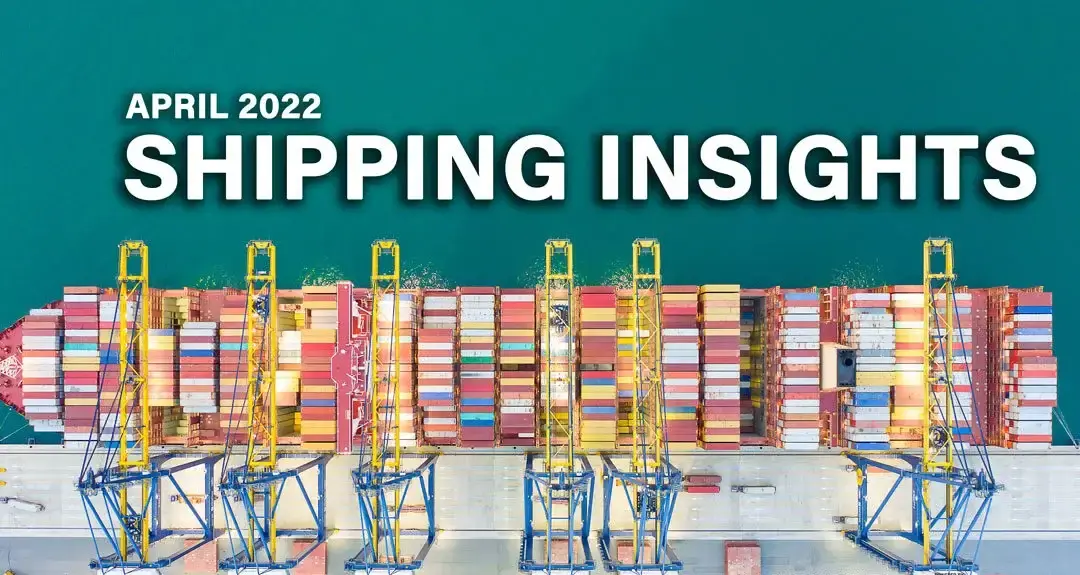
A critical component missing from the assembly line. A hospital forced to postpone surgeries due to a lack of essential fluids. These are the crippling consequences when supply chains fail. Hurricane Helene's disruption of IV fluid production and the looming semiconductor shortage underscore a harsh truth: modern supply chains are vulnerable.
These events are not isolated incidents but urgent warnings. Now, more than ever, proactive inbound freight management is critical for navigating uncertainty and building resilience.
Converging Disruptions Expose Fragile Supply Lines
We live in a world of interconnected systems, where events on one side of the globe can ripple outwards, impacting businesses and consumers thousands of miles away. This is especially true in today's complex supply chains, where a single disruption can trigger a cascade of challenges.
Right now, we're seeing this play out in real time, with two seemingly unrelated events highlighting just how vulnerable our supply lines can be.
Hurricane Helene and the IV Fluid Crisis
Hurricane Helene didn't just bring strong winds and heavy rain; it also caused major disruptions to critical supply chains. Baxter International, a leading producer of IV fluids, had its North Carolina production facility hit hard. Manufacturing ground to a halt, and it's still unclear when things will be back to normal. The WSJ Logistics Report highlights the uncertainty, stating that while Baxter aims to restart production in phases by the end of the year, there's no firm timeline for a full recovery.
This shortage has sent shockwaves through the healthcare system, with hospitals postponing elective surgeries and taking drastic measures to conserve their existing IV fluid supplies. It's a stark reminder that when essential medical supplies run short, the consequences can be severe.
Disruption in the Semiconductor Industry
Meanwhile, a different kind of storm is brewing in the tech sector. The semiconductor industry, still reeling from the volatile demand swings of the pandemic era, faces a new challenge: a dramatic shift in the global landscape of memory chip production. As major players invest heavily in expanding their manufacturing capacity, there's growing concern that this could disrupt the delicate balance of supply and demand.
This potential oversupply could leave established chipmakers with difficult choices: cut back production or risk flooding the market and triggering a price war. This situation demonstrates how quickly the tides can turn in the tech world, and how even established industries can be vulnerable to sudden shifts in the global supply chain.
The Interconnected Nature of Risk
These two events–a hurricane on the East Coast and a manufacturing boom across the globe–might seem unrelated. Still, they share a common lesson: global supply chains are intricately connected and surprisingly fragile. Whether it's a natural disaster, a geopolitical shift, or an unexpected surge in demand, disruptions can have a cascading effect across industries, impacting businesses and consumers alike.
This highlights the importance of proactive risk management, diversifying your sources of supply, and having agile strategies in place to respond to unexpected challenges. In today's volatile world, building resilience into your supply chain isn't just a good idea; it's essential for survival.
Mastering Inbound Freight for a Stronger Supply Chain
Inbound freight often gets overlooked. Many businesses focus on outbound logistics–getting finished products to customers–but inbound freight is equally crucial. It's the process of bringing all the necessary materials, components, and products into your business. Without efficient inbound freight management, your entire supply chain can suffer.
Inbound freight ensures the timely availability of the resources you need to operate. This prevents delays and keeps your operations running smoothly. Think of a manufacturing plant: if the components needed for assembly don't arrive on time, production grinds to a halt. Or consider a hospital: if critical medical supplies are delayed, patient care is compromised.
But navigating the world of inbound freight is no easy feat. It's a complex dance with a unique set of challenges:
-
Time sensitivity: In many industries, time is of the essence. Whether it's perishable goods, critical components for just-in-time manufacturing, or urgently needed medical supplies, delays can have significant consequences.
-
Stringent requirements: Inbound freight often involves handling goods with specific needs. Temperature-sensitive pharmaceuticals, fragile electronics, and hazardous materials—each requires specialized handling, packaging, and transportation to ensure safety and compliance.
-
The balancing act: Efficient inbound freight management requires striking a delicate balance. Deliveries must be optimized for speed and cost-effectiveness while also considering inventory levels, storage capacity, and the overall flow of goods throughout the supply chain.
When inbound freight falters, the repercussions can be far-reaching:
-
Production delays: Missing components can bring manufacturing lines to a standstill, resulting in missed deadlines, lost revenue, and dissatisfied customers.
-
Spoilage and waste: Improper handling or delayed deliveries of perishable goods can lead to spoilage, creating unnecessary waste and financial losses.
-
Increased costs: Inefficient routing, unexpected delays, and storage issues can drive up transportation and logistics costs, eroding profit margins.
-
Missed opportunities: Timely delivery is a major competitive advantage. A sluggish inbound freight process can lead to missed opportunities, allowing competitors to seize market share.
In contrast, strong inbound freight management ensures the smooth and timely flow of goods, preventing costly bottlenecks and disruptions. By optimizing this often-overlooked aspect of the supply chain, businesses can increase efficiency, reduce waste, and gain a competitive edge in today's demanding market.
Strategies for Resilient Inbound Freight Management
The recent hurricane that disrupted a critical IV fluid production facility and the ongoing shifts in the semiconductor landscape serve as stark reminders: disruptions are inevitable in today's interconnected world. However, these events also offer valuable lessons in building more resilient inbound freight operations. Instead of simply reacting to crises, businesses need to adopt a proactive approach, anticipating challenges and fortifying their supply chains against potential disruptions.
Proactive Planning and Risk Mitigation
Imagine if the IV fluid producer had established alternative manufacturing sites or diversified its sourcing of key components. Or if semiconductor companies had anticipated the potential impact of geopolitical shifts on their supply chains.
By proactively identifying vulnerabilities and developing contingency plans, businesses can minimize the impact of unexpected events. Data analysis and predictive modeling are powerful allies in this effort. By analyzing historical data and identifying patterns, you can anticipate potential disruptions and develop strategies to mitigate their impact.
This might involve diversifying your sourcing, establishing alternative transportation routes, or having backup suppliers ready to step in. Flexibility is key in navigating an uncertain world.
Lasting Supplier Relationships
Strong supplier relationships are the bedrock of a resilient inbound freight strategy. Just as the IV fluid producer relied on its suppliers to help recover from the hurricane's impact, businesses need to cultivate strong partnerships with reliable logistics providers. Don't put all your eggs in one basket. Diversify your sourcing to reduce reliance on any single supplier and foster open communication and transparency. When challenges arise, collaborative problem-solving is essential.
Technology as a Force Multiplier
Technology provides powerful tools to enhance visibility and optimize inbound freight operations. Real-time tracking systems, for instance, could have provided early warnings of potential delays caused by the hurricane, enabling proactive rerouting or alternative sourcing of IV fluids.
Transportation management systems (TMS) streamline operations, automate tasks, and provide data-driven insights for better decision-making. AI-powered platforms take this a step further, using predictive analytics to identify potential risks and optimize routes, schedules, and inventory levels.
Strategic Partnerships
Resilient inbound freight management requires a coordinated effort. But, managing a complex network of suppliers, carriers, and internal teams can be daunting. This is where a strategic partnership with a third-party logistics provider (3PL) can be invaluable.
A 3PL acts as an extension of your team, bringing expertise, technology, and a network of established relationships to optimize your inbound freight operations. By leveraging the power of a 3PL partnership, you can streamline communication, enhance visibility, and build a truly resilient supply chain.
Building a Supply Chain That Can Weather Any Storm
Recent events have exposed the fragility of modern supply chains. From hurricanes to shifting global markets, disruptions are inevitable. But they don't have to be catastrophic.
Proactive inbound freight management is the key to building resilience and ensuring business continuity. By prioritizing planning, diversification, technology adoption, and collaboration, organizations can navigate uncertainty and safeguard their operations.
Customodal empowers businesses with the tools and expertise to optimize inbound freight and build stronger, more agile supply chains. Contact Customodal today to learn how we can help you weather any storm and achieve your business goals.





